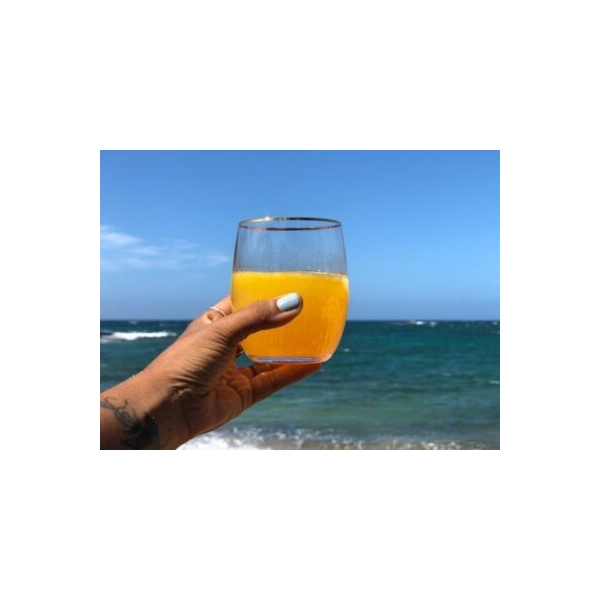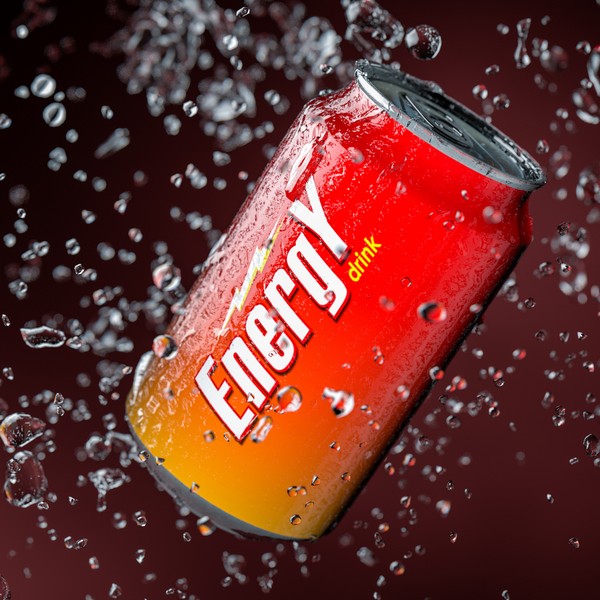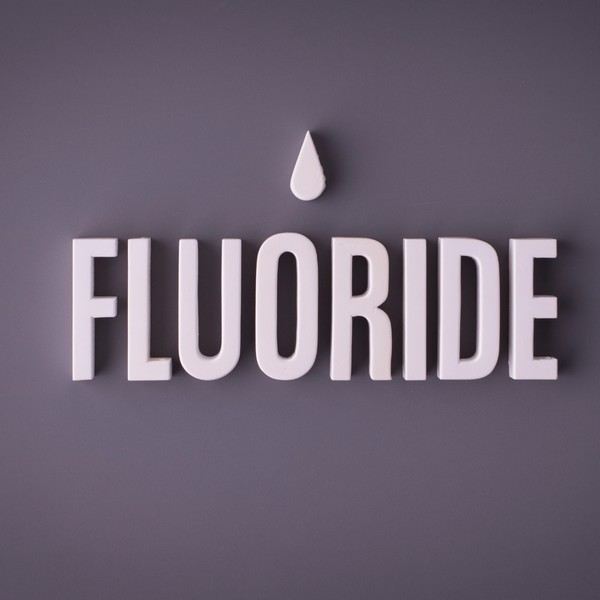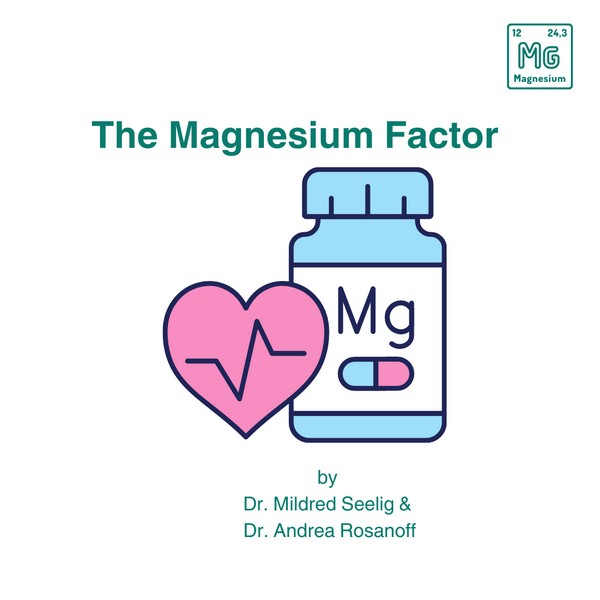Key Takeaways
– Diatomaceous earth is a natural powder made from fossilized algae called diatoms.
– It helps cleanse the body of toxins and heavy metals, acting as a natural detoxifier.
– The high silica content supports skin, hair, and nail health, promoting collagen production.
– It serves as an effective, natural pest control solution, safe for humans and pets.
– Regular use may support digestive health by eliminating parasites and improving gut function.
What is Diatomaceous Earth?

Origin and Composition
Diatomaceous earth is composed of the microscopic remains of diatoms, a type of algae that lived in oceans and freshwater lakes millions of years ago.
Over time, these remains accumulated in large deposits and fossilized. The result is a fine, powdery substance rich in silica—a mineral that’s essential for many bodily functions.
Types of Diatomaceous Earth (Food Grade vs. Industrial)
There are two main types of diatomaceous earth: food grade and industrial grade.
Food-grade diatomaceous earth is safe for human and animal consumption and is used for health purposes, while industrial-grade diatomaceous earth is used for things like filtration and pest control but is not safe for ingestion.
Health Benefits of Diatomaceous Earth
Detoxification

Removing Toxins and Heavy Metals
One of the most talked-about benefits of diatomaceous earth is its detoxifying properties.
DE acts like a magnet for toxins and heavy metals in the body, helping to remove them through the digestive system.
Its abrasive texture helps clean the digestive tract, trapping and eliminating unwanted substances.
Supporting Liver Function
By helping to rid the body of toxins, diatomaceous earth also supports liver function.
The liver is the body’s primary detox organ, and by reducing the toxin load, DE helps the liver work more efficiently, promoting overall health.
Skin, Hair, and Nail Health
High Silica Content
Silica is a key component of diatomaceous earth, making it beneficial for skin, hair, and nail health.
Silica helps strengthen and maintain the elasticity of skin, giving it a youthful appearance. It also promotes the growth of strong, healthy hair and nails.
Promoting Collagen Production
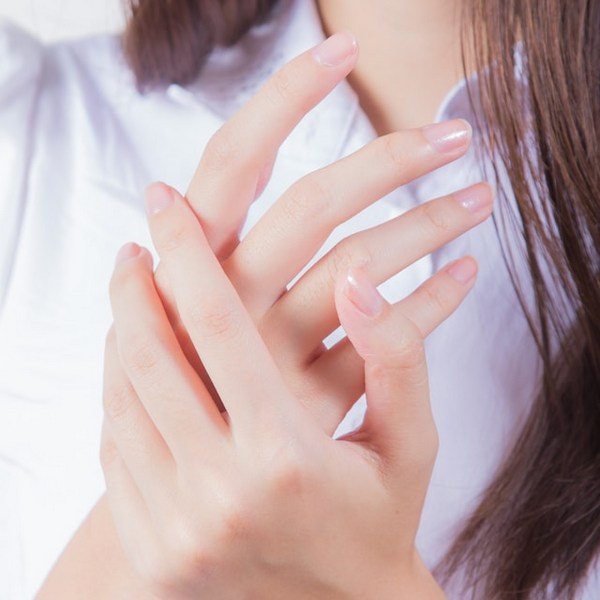
Collagen is the most abundant protein in the body and is needed for maintaining the structure of skin, hair, and nails.
The silica in diatomaceous earth helps boost collagen production, which can improve skin’s elasticity, reduce wrinkles, and keep hair and nails strong.
Digestive Health
Eliminating Parasites
Diatomaceous earth’s abrasive properties make it effective in eliminating parasites from the digestive tract.
As it moves through the digestive system, DE can scrape away parasites and other harmful organisms, helping to keep your gut healthy.
Promoting Gut Health
In addition to eliminating parasites, diatomaceous earth can also improve gut health by promoting the growth of beneficial bacteria.
A healthy gut microbiome is essential for good digestion, nutrient absorption, and overall wellness.
Practical Uses of Diatomaceous Earth
Natural Pest Control
Safe for Humans and Pets
Diatomaceous earth is a popular natural pest control solution because it’s safe for humans and pets.
It works by absorbing the oils and fats from the exoskeletons of insects like ants, fleas, and bedbugs, causing them to dehydrate and die.
How to Use Around the Home
To use diatomaceous earth for pest control, simply sprinkle it around the areas where you’ve noticed pests.
You can also apply it directly to your pets’ fur to control fleas. Just be sure to use food-grade DE and avoid inhaling the powder.
Personal Care Products

Skincare
Diatomaceous earth can be used as an exfoliant in skincare routines. Its fine texture helps remove dead skin cells, leaving your skin smooth and refreshed.
You can mix it with water or your favorite cleanser to create a gentle scrub.
Toothpaste
You can also add diatomaceous earth to homemade toothpaste for its gentle abrasive properties, which can help clean and polish your teeth.
However, be sure to use food-grade DE and consult with your dentist before trying it out.
Supplementation
How to Take Diatomaceous Earth Safely
If you’re looking to add diatomaceous earth to your diet, start with a small amount, such as half a teaspoon, and gradually increase to a full teaspoon mixed in water, juice, or a smoothie.
It’s best to take it on an empty stomach and drink plenty of water throughout the day.
Recommended Dosages
While there’s no one-size-fits-all dosage for diatomaceous earth, most people find that 1-2 teaspoons per day is effective for general health.
Always listen to your body and consult with a healthcare provider if you’re unsure.
Precautions and Considerations
Safety Concerns
Inhalation Risks
Although diatomaceous earth is generally safe for consumption, it’s important to avoid inhaling the powder, as it can irritate the lungs.
Always handle DE carefully and consider wearing a mask if you’re applying it in large amounts.
Proper Storage and Handling
Store diatomaceous earth in a cool, dry place, away from moisture. Keep it in a sealed container to prevent it from becoming airborne and to maintain its effectiveness.
Who Should Avoid Using Diatomaceous Earth
Individuals with Respiratory Issues
People with respiratory conditions like asthma should avoid using diatomaceous earth in powder form due to the risk of inhalation. If you have any concerns, it’s best to consult with a healthcare provider.
Pregnant or Nursing Women
While there’s limited research on the use of diatomaceous earth during pregnancy or breastfeeding, it’s always a good idea to consult with a healthcare provider before starting any new supplement.
Conclusion
Diatomaceous earth is a versatile and natural substance that offers a wide range of health and practical benefits. From detoxifying the body to improving skin, hair, and digestive health, DE can be a valuable addition to your wellness routine. It’s also a safe and effective solution for natural pest control, making it a useful tool for a healthier home. Whether you’re using it for personal care or as a dietary supplement, diatomaceous earth proves to be a powerful ally in promoting overall health and well-being.
FAQs
What is diatomaceous earth, and how is it used?
Diatomaceous earth is a natural powder made from fossilized algae. It’s used for health benefits and natural pest control.
Can diatomaceous earth help with detoxification?
Yes, diatomaceous earth can help remove toxins and heavy metals from the body, supporting overall detoxification.
Is diatomaceous earth safe for everyday use?
Food-grade diatomaceous earth is generally safe for daily use when taken properly. Avoid inhaling the powder.
How do I use diatomaceous earth as a natural pest control?
Sprinkle diatomaceous earth around areas where pests are a problem. It’s safe for humans and pets but deadly to insects.
What are the potential side effects of using diatomaceous earth?
The main concern is inhalation, which can irritate the lungs. Some may also experience mild digestive upset if taken in excess.
Research
Aoun M, Arnaud L, et al. (2018). Diatomaceous earth and a specified blend of essential oils as a novel bioinsecticide against Plutella xylostella. Journal of Pest Science, 91(4), 1347-1357.
Antonelli M, Cesaratto E, et al. (2014). Diatomaceous earth filtration for the removal of antibiotic residues from wastewater. Chemosphere, 99, 130-136.
Bakkali F, Averbeck S, et al. (2008). Biological effects of essential oils - a review. Food and Chemical Toxicology, 46(2), 446-475.
Borrego S, Oendi EA, et al. (2018). Assessment of the efficacy of diatomaceous earth for the control of the rust-red flour beetle, Tribolium castaneum (Herbst). Journal of Stored Products Research, 84, 24-29.
Chen H, Yao Y, et al. (2019). Effectiveness of diatomaceous earth and monomolecular film in controlling the brown planthopper, Nilaparvata lugens (Stal). Pest Management Science, 75(1), 151-157.
Country Homestead Living. (n.d.). Diatomaceous Earth: Uses, Health Benefits, Is It Safe. https://www.countryhomesteadliving.com/diatomaceous-earth-benefits-safety/
Diatomaceous. (n.d.). Silica Supplement Guide (DE vs Orthosilicic Acid vs Horsetail). https://diatomaceous.org/silica-supplement-guide
Diatoms of North America. (n.d.). What are Diatoms? https://diatoms.org/what-are-diatoms
Ferreira M, Ferreira JP, et al. (2016). Diatomaceous earth as a pest management tool for the control of the olive moth, Prays oleae, in an integrated olive production system. Journal of Pest Science, 89(4), 915-926.
Global Healing. (2018, February 8). Five Benefits of Diatomaceous Earth. https://explore.globalhealing.com/5-benefits-of-diatomaceous-earth/
Hunner JV, Zou X, et al. (2019). Evaluation of diatomaceous earth as an eco-friendly pest control agent for stored products pests. Journal of Economic Entomology, 112(1), 206-211.
JUGDAOHSINGH, R. SILICON AND BONE HEALTH. The Journal of Nutrition, Health & Aging, 11(2), 99. https://www.ncbi.nlm.nih.gov/pmc/articles/PMC2658806/
Johnson TL, Geden CJ, et al. (2014). Potential of diatomaceous earth and silica aerogel for controlling lesser mealworm (Coleoptera: Tenebrionidae) in poultry houses. Journal of Economic Entomology, 107(1), 379-386.
José L Domingo, Mercedes Gómez, M Teresa Colomina. Oral silicon supplementation: an effective therapy for preventing oral aluminum absorption and retention in mammals. Nutrition Reviews, Volume 69, Issue 1, 1 January 2011, Pages 41–51, https://doi.org/10.1111/j.1753-4887.2010.00360.x
Jurkić, L. M., Cepanec, I., Pavelić, S. K., & Pavelić, K. (2013). Biological and therapeutic effects of ortho-silicic acid and some ortho-silicic acid-releasing compounds: New perspectives for therapy. Nutrition & Metabolism, 10, 2. https://doi.org/10.1186/1743-7075-10-2
Kulkarni S, Joshi C, et al. (2012). Antimicrobial activity of diatomaceous earth against pathogenic bacterial strains. Journal of Coastal Life Medicine, 1(4), 299-302.
Lam PK, Fuerst JA. (2001). Diatomaceous earth as a novel substrate for bacterial growth. Journal of Applied Microbiology, 91(5), 821-828.
Liu X, Zhang A, et al. (2018). Soil amendment with diatomaceous earth reduces the persistence and bioavailability of pesticides in agricultural soils. Science of the Total Environment, 625, 70-77.
Liu, H., Qiao, Z., Jang, Y. O., Kim, M. G., Zou, Q., Lee, H. J., Koo, B., Kim, H., Yun, K., Kim, S., & Shin, Y. (2021). Diatomaceous earth/zinc oxide micro-composite assisted antibiotics in fungal therapy. Nano Convergence, 8.
https://doi.org/10.1186/s40580-021-00283-6
Martin KR. The chemistry of silica and its potential health benefits. The Journal of Nutrition Health and Aging. 2007 March-April;11(2):94-97.
Mewis, I, & Ulrichs, Ch. (2001). Action of amorphous diatomaceous earth against different stages of the stored product pests Tribolium confusum, Tenebrio molitor, Sitophilus granarius and Plodia interpunctella. Journal of Stored Products Research, 37: 2. 153-164. https://doi.org/10.1016/S0022474X(00)00016-3
Michalak K, Mikulak E, et al. (2016). Diatomaceous earth as a potential adjuvant for the production of influenza vaccines. World Journal of Biological Chemistry, 7(2), 288-297.
Nagarajan S, Ganapathi TR, et al. (2012). Use of diatomaceous earth to protect maize kernels from insect infestations during storage. Indian Journal of Agricultural Sciences, 82(11), 975-978.
Pimentel AD, Sobral LG, et al. (2017). Evaluation of diatomaceous earth for the control of bed bugs. Journal of Economic Entomology, 110(1), 257-262.
Price, C. T., Koval, K. J., & Langford, J. R. (2013). Silicon: A Review of Its Potential Role in the Prevention and Treatment of Postmenopausal Osteoporosis. International Journal of Endocrinology, 2013(1), 316783. https://doi.org/10.1155/2013/316783
Quiroz-Castañeda RE, Diaz-Godinez G, et al. (2018). Evaluation of the insecticidal activity of different diatomaceous earth formulations against the red flour beetle, Tribolium castaneum. Journal of Stored Products Research, 76, 89-96.
Sarikurkcu C, Zengin G, et al. (2016). Diatomaceous earth as a promising natural ingredient in functional beverages. Industrial Crops and Products, 86, 318-323.
Shotorbani AH, Tashakori M, et al. (2016). Effect of diatomaceous earth as an alternative to synthetic chemicals on ruminal fermentation, protozoa population, and microbial profile in vitro. Journal of Agricultural Science and Technology, 18(5), 1385-1394.
Silicium Laboratories LLC. (2021, April 13). LIVING SILICA ® EFFECTS IN COLLAGEN PRODUCTION. https://blog.livingsilica.com/silica-effects-in-collagen-production
Stijn OP, Zahner H, et al. (2017). Efficacy of diatomaceous earth for control of the tick Rhipicephalus sanguineus (Acari: Ixodidae) in domestic dogs. Veterinary Parasitology, 235, 49-54.
Sullivan MD, Euler CC, et al. (2014). Efficacy of diatomaceous earth and heat treatments for controlling bed bugs in low-income and affordable housing. Journal of Economic Entomology, 107(5), 1748-1755.
Thompson DP, Gunning D, et al. (2014). Evaluation of diatomaceous earth formulation for the control of fleas and ticks on cats. Veterinary Parasitology, 201(3-4), 226-231.
Uehleke, B., Ortiz, M., & Stange, R. (2012). Silicea Gastrointestinal Gel Improves Gastrointestinal Disorders: A Non-Controlled, Pilot Clinical Study. Gastroenterology Research and Practice, 2012(1), 750750. https://doi.org/10.1155/2012/750750
Wachter, H., Lechleitner, M., Artner-Dworzak, E., Hausen, A., Jarosch, E., Widner, B., Patsch, J., Pfeiffer, K., & Fuchs, D. (1998). Diatomaceous earth lowers blood cholesterol concentrations. European Journal of Medical Research, 3(4), 211–215.
Wong WK, Leung AK, et al. (2016). Evaluation of diatomaceous earth for reducing populations of stored-product pests in infested wheat. Journal of Stored Products Research, 69, 23-28.
Yun-hua L, Du J, et al. (2017). Sorption properties and mechanisms of diatomaceous earth towards sulfonamides in aqueous solution. Journal of Environmental Management, 198(Pt 1), 1-9.
Knowledge before intervention: a multi-faceted mango value chains study in Malaysia. Virtual Market and Fresh Business Platform | I.J. Agronomy and Agricultural Research, 18(5), 818-829.
The Effect of Sachet Water Quality on the Health of Street-Connected Children in Han City. Yearbook of Science and Technology. I.J. Medicine and Medical Science, 18(5), 930-939.
11 Amazing Tips to Improve Your Sleep Quality
Limit Power NapsModulate Sunlight ExposurePay Attention to CaffeineSchedule BedtimePlan Ahead for DinnertimeMelatonin: Not what you thoughtSleep EnvironmentHot Bath or ShowerEliminate Blue LightSleep StackAdrenal CocktailMagnesium The…
Do Artificial Sweeteners Cause Weight Gain? The Surprising Truth
Key Takeaways – Artificial sweeteners may disrupt gut microbiome balance, impacting digestion and immune health. – These sweeteners can interfere with natural metabolism, leading to…
How Insulin Regulates Blood Sugar
Key Takeaways Insulin helps regulate blood sugar by moving glucose into cells. Imbalances in insulin levels can cause conditions like diabetes. Insulin resistance can lead…
Osteoarthritis Symptoms & Home Remedies
Key Takeaways Lifestyle adjustments and alternative therapies contribute to overall symptom management. Low-impact exercises and physical activity help maintain mobility and reduce pain. Heat and…
Melatonin: Functions and Benefits
Key Takeaways Melatonin helps regulate sleep-wake cycles, signaling the body to rest as it gets dark. It acts as an antioxidant, protecting cells from damage….
Superoxide Dismutase: Your Body’s Antioxidant Defender
Key Takeaways SOD protects against oxidative stress by neutralizing free radicals. Copper is necessary for SOD to function. Low SOD activity can lead to aging,…
Why Sunlight is Essential for a Healthy Life
Key Takeaways Sunlight helps the body produce vitamin D, supporting bone health and immune function. Exposure to sunlight can improve mood and reduce symptoms of…
The EWG Dirty Dozen: What You Need to Know
Key Takeaways The Dirty Dozen list highlights fruits and vegetables with the highest levels of pesticide residues. In 2024, strawberries, spinach, and kale top the…
Elimination Diets: Find the Foods Behind Your Symptoms
Key Takeaways Elimination diets identify food intolerances by removing and reintroducing specific foods. Divided into two phases: elimination and reintroduction. Items like gluten, soy, and…
Adrenal Cocktail: Recipe and Benefits
Key Takeaways The adrenal cocktail supports adrenal health and maintains energy levels. Combines potassium, sodium, and vitamin C for effective adrenal nourishment. Consumed in the…
Autism: Causes, Symptoms, and Management
Key Takeaways Autism Spectrum Disorder (ASD) is a complex neurodevelopmental condition that varies widely in symptoms and severity. Both genetic and environmental factors contribute to…
Ceruloplasmin: The Master Antioxidant
Key Takeaways: Ceruloplasmin is a copper-containing enzyme essential for iron metabolism and preventing oxidative stress. It helps transport iron safely, preventing iron overload in tissues…
Does Grounding or Earthing Actually Work?
Bromate: Its Impact on Your Thyroid & Nervous System
Key Takeaways Bromate is a toxic byproduct from water disinfection, impacting thyroid and nervous system health. It interferes with iodine, leading to thyroid dysfunction and…
Gestational Diabetes Management: Expert Tips for Success
Key Highlights Gestational diabetes, marked by glucose intolerance during pregnancy, requires careful blood sugar control. A healthy pregnancy with gestational diabetes includes regular exercise, a…
Sunburn Prevention: Holistic and Natural Approaches
Key Takeaways A poor diet increases the risk of sunburn and skin damage. Short, regular sun exposure reduces the risk of sunburn. Early morning and…
Adrenal Fatigue: Symptoms & Prevention
Key Takeaways: Adrenal fatigue is often linked to prolonged stress, leading to tiredness, brain fog, and mood swings. Disruptions in cortisol production can affect energy,…
Gout: Symptoms & Natural Treatment
Key Takeaways Gout results from the accumulation of uric acid crystals in the joints, causing severe pain and inflammation. High uric acid levels are often…
Oxidative Stress: Causes, Effects, Solutions
Key Takeaways Oxidative stress results from an imbalance between free radicals and antioxidants in the body, leading to cellular damage. Chronic oxidative stress contributes to…
Are Energy Drinks Dangerous?
Key Takeaways: Caffeine is the most common stimulant in energy drinks. Sugar, though harmful, is widely used in energy drinks. Electrolytes help maintain hydration and…
Fluoride: Risks & Controversies
Key Takeaways Fluoride is widely used in dental products and water supplies, but its safety is debated. Overexposure to fluoride can lead to conditions like…
DNA & Longevity: Can You Live to 200?
Key Takeaways: Longevity is shaped by a mix of genetics and lifestyle. Certain genes are linked to longer lifespans. Lifestyle choices can influence how long…
Natural Remedies for Common Ailments: From Headaches to Allergies
Key Takeaways The appeal of natural remedies lies in their holistic approach, fewer side effects, and environmental sustainability. Specific natural remedies can effectively alleviate common…
Managing Menopause Symptoms – A Guide to Navigate this Life Stage
Exercise RoutineManaging Stress Improving Sleep HabitsSeeking Emotional Support:Adjusting Your DietConsidering Alternative TherapiesFrequently Asked Questions Menopause is a natural stage in a woman’s life marking the…
GABA (gamma-aminobutyric acid)
The Randle Cycle: Glucose Fat Energy Dilemma
Key Takeaways The Randle Cycle explains how the body chooses between burning glucose and fatty acids for energy. Enzymes and hormones play a key role…
Natural Childbirth: Pain Management & Breathing
Key Takeaways Natural childbirth focuses on managing labor without medical interventions. Breathing techniques help alleviate…
Potassium: Benefits & Sources
Key Takeaways Potassium is essential for regulating fluid balance, nerve signals, and muscle function. It…
DNA & Longevity: Can You Live to 200?
Key Takeaways: Longevity is shaped by a mix of genetics and lifestyle. Certain genes are…
The Magnesium Factor by Dr. Mildred Seelig & Dr. Andrea Rosanoff
Key Takeaways Explores magnesium’s role in cardiovascular health. Discusses interaction between magnesium and other minerals….
Autism: Causes, Symptoms, and Management
Key Takeaways Autism Spectrum Disorder (ASD) is a complex neurodevelopmental condition that varies widely in…
Zinc Supplements: Risks and Dangers
Key Takeaways Zinc supports immunity, wound healing, and cell growth. High zinc supplement doses can…
8 Key Signs of Nutrient Deficiency
Key Takeaways Magnesium: A multitasker that aids in over 300 biochemical reactions in the body….
Pre-Eclampsia: Causes, Symptoms, and Treatment
Key Takeaways Pre-eclampsia involves high blood pressure and organ damage after 20 weeks of pregnancy….
Increase GLP-1 Agonists Naturally
Key Takeaways: GLP-1 agonists regulate appetite, insulin production, and blood sugar levels. Regular exercise and…
Eggs: A Comprehensive Guide
Key Highlights Eggs are a nutritional powerhouse, containing all the essential vitamins and minerals needed…
Superoxide Dismutase: Your Body’s Antioxidant Defender
Key Takeaways SOD protects against oxidative stress by neutralizing free radicals. Copper is necessary for…









